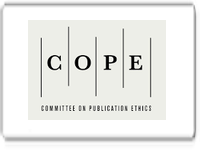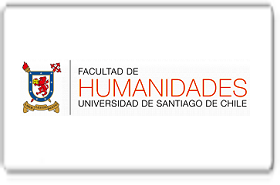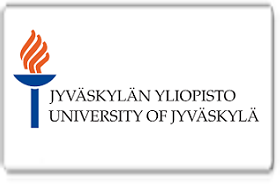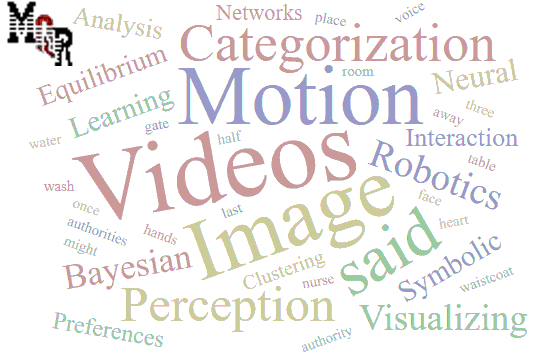Técnicas de anonimización y pseudonimización en la protección de datos personales
DOI:
https://doi.org/10.56048/MQR20225.8.1.2024.204-235Palabras clave:
Anonimización; Pseudonimización; Seguridad; Datos; Información; ProtecciónResumen
Las técnicas de anonimización y pseudonimización ofrecen a los usuarios la protección de sus datos personales para evitar que sean difundidos y utilizados con un propósito ajeno para los cuales fueron recolectados. El presente articulo tiene como objetivo comparar las diversas técnicas de protección de datos personales como la anonimización y pseudonimización. Para ello, se examina a detalle su fundamentación teórica y características inherentes de cada técnica, los procedimientos de aplicación, beneficios y limitaciones que trae consigo la aplicación de estas metodologías. Para investigar acerca de la temática, se emplea la metodología PRISMA que permite buscar, seleccionar y analizar la literatura científica, dando como resultado de la recopilación de documentos mediante el empleo de gestores de búsqueda un total de 32 artículos científicos que fueron desarrollados entre 2018-2023 y contienen información relevante que aporta al desarrollo del presente artículo. Los resultados indican que la técnica de anonimización está enfocada en presentar datos no identificables mediante la adición de ruido, permutaciones o privacidad diferencial que contribuyen a mantener la privacidad de los datos y preservar la utilidad de los mismos. Paralelamente, la pseudonimización tiene como objetivo reemplazar la información inicial identificable con seudónimos que mantengan protegida la identidad de una persona. Como conclusión del estudio, se definen las técnicas de protección de información personal. Estas estrategias son fundamentales para identificar datos considerados como confidenciales para los usuarios, aplicando métodos de privatización que reduzcan los riesgos inherentes al compartir información con terceros; logrando el equilibrio entre utilidad y la reserva de información.
Descargas
Métricas
Cited
DOI: 10.56048![]()
Citas
Al-Zubaidie, M., Zhang, Z., & Zhang, J. (2019). PAX: Using Pseudonymization and Anonymization to Protect Patients’ Identities and Data in the Healthcare System. International Journal of Environmental Research and Public Health, 16(9), 1490. https://doi.org/10.3390/ijerph16091490
Anant, A., & Prasad, R. (2022). Privacy Preservation for Enterprises Data in Edge Devices. Journal of ICT Standardization, 10(1), 85–104. https://doi.org/10.13052/jicts2245-800X.1015
Angelozzi, S. (2020). La gestión de datos de investigación en abierto: introducción al rol emergente para las bibliotecas universitarias y científicas argentinas. Palabra Clave (La Plata), 9(2). https://doi.org/10.24215/18539912e091
Batko, K., & Ślęzak, A. (2022). The use of Big Data Analytics in healthcare. Journal of Big Data, 9(1). https://doi.org/10.1186/s40537-021-00553-4
Bey, R., Goussault, R., Grolleau, F., Benchoufi, M., & Porcher, R. (2020). Fold-stratified cross-validation for unbiased and privacy-preserving federated learning. Journal of the American Medical Informatics Association, 27(8), 1244–1251. https://doi.org/10.1093/jamia/ocaa096
Bouchelaghem, S., & Omar, M. (2020). Secure and efficient pseudonymization for privacy-preserving vehicular communications in smart cities. Computers and Electrical Engineering, 82. https://doi.org/10.1016/j.compeleceng.2020.106557
Bousquet, J., Agache, I., Almeida, R., Angles, R., Annesi-Maesano, I., Anto, J. M., Arnavielhe, S., Asayag, E., Bacci, E., Bachert, C., Baiardini, I., Baroni, I., Barreto, B. A., Basagana, X., Bedbrook, A., Bedolla-Barajas, M., Bergmann, K. C., Bertorello, L., Bewick, M., … Wittmann, J. (2018). Geolocation with respect to personal privacy for the Allergy Diary app - A MASK study. World Allergy Organization Journal, 11(15). https://doi.org/10.1186/s40413-018-0194-3
Chahal, A., Gulia, P., & Gill, N. (2022). Different analytical frameworks and bigdata model for internet of things. Indonesian Journal of Electrical Engineering and Computer Science, 25(2), 1159–1166. https://doi.org/10.11591/ijeecs.v25.i2.pp1159-1166
De Pascale, D., Cascavilla, G., Tamburri, D. A., & Van Den Heuvel, W. J. (2023). Real-world K-Anonymity applications: The KGEN approach and its evaluation in fraudulent transactions. Information Systems, 115. https://doi.org/10.1016/j.is.2023.102193
Dubagunta, P., Van Son, R., & Magimai, M. (2022). Adjustable deterministic pseudonymization of speech. Computer Speech & Language, 72. https://doi.org/10.1016/j.csl.2021.101284
El Ouazzani, Z., & El Bakkali, H. (2020). A classification of non-cryptographic anonymization techniques ensuring privacy in big data. International Journal of Communication Networks and Information Security, 12(1), 142–152. https://doi.org/10.17762/ijcnis.v12i1.4401
Englert, R., Schedlowski, M., Engler, H., Rief, W., Büchel, C., Bingel, U., & Spisak, T. (2023). ALIIAS: Anonymization/Pseudonymization with LimeSurvey integration and II-factor Authentication for Scientific research. SoftwareX, 24. https://doi.org/10.1016/j.softx.2023.101522
Gazizov, A., Gazizov, E., & Gazizova, S. (2020). Theoretical aspects of the protection of personal data of employees of the enterprise by the method of pseudonymization. E3S Web of Conferences, 210(11001). https://doi.org/10.1051/e3sconf/202021011001
Hintze, M., & El Emam, K. (2018). Comparing the benefits of pseudonymisation and anonymisation under the GDPR.
Jiang, H., Pei, J., Yu, D., Yu, J., Gong, B., & Cheng, X. (2023). Applications of Differential Privacy in Social Network Analysis: A Survey. IEEE Transactions on Knowledge and Data Engineering, 35(1), 108–127. https://doi.org/10.1109/TKDE.2021.3073062
Kacha, L., Zitouni, A., & Djoudi, M. (2022). A new k-anonymity approach based on black hole algorithm. Journal of King Saud University - Computer and Information Sciences, 34(7), 4075–4088. https://doi.org/10.1016/j.jksuci.2021.04.014
Karthik, P., & Shanthi Bala, P. (2022). A new design paradigm for provably secure keyless hash function with subsets and two variables polynomial function. Journal of King Saud University - Computer and Information Sciences, 34(5), 1933–1949. https://doi.org/10.1016/j.jksuci.2019.10.003
Karunanayake, I., Ahmed, N., Malaney, R., Islam, R., & Jha, S. K. (2021). De-Anonymisation Attacks on Tor: A Survey. IEEE Communications Surveys and Tutorials, 23(4), 2324–2350. https://doi.org/10.1109/COMST.2021.3093615
Kohlmayer, F., Lautenschläger, R., & Prasser, F. (2019). Pseudonymization for research data collection: is the juice worth the squeeze? BMC Medical Informatics and Decision Making, 19(178), 178. https://doi.org/10.1186/s12911-019-0905-x
Li, C., Chen, Y., & Shang, Y. (2022). A review of industrial big data for decision making in intelligent manufacturing. In Engineering Science and Technology, an International Journal (Vol. 29). https://doi.org/10.1016/j.jestch.2021.06.001
Lutfi, A., Alsyouf, A., Almaiah, M. A., Alrawad, M., Abdo, A. A. K., Al-Khasawneh, A. L., Ibrahim, N., & Saad, M. (2022). Factors Influencing the Adoption of Big Data Analytics in the Digital Transformation Era: Case Study of Jordanian SMEs. Sustainability (Switzerland), 14(3). https://doi.org/10.3390/su14031802
Mahanan, W., Chaovalitwongse, W. A., & Natwichai, J. (2021). Data privacy preservation algorithm with k-anonymity. World Wide Web, 24(5), 1551–1561. https://doi.org/10.1007/s11280-021-00922-2
Majeed, A., Khan, S., & Hwang, S. (2022). Toward Privacy Preservation Using Clustering Based Anonymization: Recent Advances and Future Research Outlook. IEEE Access, 10, 53066–53097. https://doi.org/10.1109/ACCESS.2022.3175219
Majeed, A., & Lee, S. (2021). Anonymization Techniques for Privacy Preserving Data Publishing: A Comprehensive Survey. IEEE Access, 9, 8512–8545. https://doi.org/10.1109/ACCESS.2020.3045700
Mao, J., Tian, W., Jiang, J., He, Z., Zhou, Z., & Liu, J. (2018). Understanding structure-based social network de-anonymization techniques via empirical analysis. EURASIP Journal on Wireless Communications and Networking, 279(2018). https://doi.org/10.1186/s13638-018-1291-2
Marques, J., & Bernardino, J. (2020). Analysis of data anonymization techniques. IC3K 2020 - Proceedings of the 12th International Joint Conference on Knowledge Discovery, Knowledge Engineering and Knowledge Management, 2, 235–241. https://doi.org/10.5220/0010142302350241
Meindl, B., & Templ, M. (2019). Feedback-based integration of the whole process of data anonymization in a graphical interface. Algorithms, 12(191). https://doi.org/10.3390/a12090191
Mohammed, B., Mohd, A., Abdulghani, A., & Ali Safaa, S. (2022). Slicing-Based Enhanced Method for Privacy-Preserving in Publishing Big Data. Computers, Materials & Continua, 72(2), 3665–3686. https://doi.org/10.32604/cmc.2022.024663
Murakami, T., Arai, H., Hamada, K., Hatano, T., Iguchi, M., Kikuchi, H., Kuromasa, A., Nakagawa, H., Nakamura, Y., Nishiyama, K., Nojima, R., Oguri, H., Watanabe, C., Yamada, A., Yamaguchi, T., & Yamaoka, Y. (2023). Designing a Location Trace Anonymization Contest. Proceedings on Privacy Enhancing Technologies, 2023(1), 225–243. https://doi.org/10.56553/popets-2023-0014
Neumann, G., Grace, P., Burns, D., & Surridge, M. (2019). Pseudonymization risk analysis in distributed systems. Journal of Internet Services and Applications, 10(1). https://doi.org/10.1186/s13174-018-0098-z
Ozeran, L., Solomonides, A., & Schreiber, R. (2021). Privacy versus Convenience: A Historical Perspective, Analysis of Risks, and an Informatics Call to Action. In Applied Clinical Informatics (Vol. 12, Issue 2, pp. 274–284). Georg Thieme Verlag. https://doi.org/10.1055/s-0041-1727197
Page, M. J., McKenzie, J. E., Bossuyt, P. M., Boutron, I., Hoffmann, T. C., Mulrow, C. D., Shamseer, L., Tetzlaff, J. M., Akl, E. A., Brennan, S. E., Chou, R., Glanville, J., Grimshaw, J. M., Hróbjartsson, A., Lalu, M. M., Li, T., Loder, E. W., Mayo-Wilson, E., McDonald, S., … Moher, D. (2021). The PRISMA 2020 statement: An updated guideline for reporting systematic reviews. The BMJ, 74(9), 790–799. https://doi.org/10.1136/bmj.n71
Pratama, A. M., & Pati, U. K. (2021). Analysis Principles of Personal Data Protection on COVID-19 Digital Contact Tracing Application: PeduliLindungi Case Study. Lex Scientia Law Review, 5(2), 65–88. https://doi.org/10.15294/lesrev.v5i2.50601
Puluhulawa, F. U., Puluhulawa, J. U., & Katili, G. G. (2020). Legal Weak Protection of Personal Data in the 4.0 Industrial Revolution Era. Jambura Law Review, 2(2), 182–200. https://www.hukumonline.com/berita/baca/lt5d1c3962e01a4/perlindungan-data-pribadi-tersebar-
Ribeiro, S., & Nakamura, E. (2019). Privacy Protection with Pseudonymization and Anonymization in a Health IoT System: Results from OCARIoT. Proceedings - 2019 IEEE 19th International Conference on Bioinformatics and Bioengineering, BIBE 2019, 904–908. https://doi.org/10.1109/BIBE.2019.00169
Sánchez, S., Pedraz, I., & Donoso, M. (2022). ¿Cómo hacer una revisión sistemática siguiendo el protocolo PRISMA? Bordón. Revista de Pedagogía, 74(3), 51–66. https://doi.org/10.13042/Bordon.2022.95090
Sarkis-Onofre, R., Catalá-López, F., Aromataris, E., & Lockwood, C. (2021). How to properly use the PRISMA Statement. Systematic Reviews, 10(1), 117. https://doi.org/10.1186/s13643-021-01671-z
Selcuk, A. A. S. AA. A. G. for S. R. PRISMA. T. A. Otorhinolaryngol. 2019;57(1):57–8. (2019). A Guide for Systematic Reviews: PRISMA. Turkish Archives of Otorhinolaryngology, 57(1), 57–58. https://doi.org/10.5152/tao.2019.4058
Slijepčević, D., Henzl, M., Klausner, L., Dam, T., Kieseberg, P., & Zeppelzauer, M. (2021). Anonymity in practice: How generalisation and suppression affect machine learning classifiers. Computers & Security, 111. https://doi.org/10.1016/j.cose.2021.102488
Sweeney, L. (2022). k-ANONYMITY: A MODEL FOR PROTECTING PRIVACY. International Journal of Uncertainty, Fuzziness and Knowledge-Based Systems, 10(05), 557–570. https://doi.org/10.1142/S0218488502001648
Tahir, H., & Brezillon, P. (2022). A Context Approach to Improve the Data Anonymization Process. 2022 International Conference on Engineering and Emerging Technologies (ICEET), 1–6. https://doi.org/10.1109/ICEET56468.2022.10007410
Tepe, B., Haberschusz, D., Figgener, J., Hesse, H., Uwe Sauer, D., & Jossen, A. (2023). Feature-conserving gradual anonymization of load profiles and the impact on battery storage systems. Applied Energy, 343. https://doi.org/10.1016/j.apenergy.2023.121191
Tomás, J., Rasteiro, D., & Bernardino, J. (2022). Data Anonymization: An Experimental Evaluation Using Open-Source Tools. Future Internet, 14(167). https://doi.org/10.3390/fi14060167
Torra, V., & Salas, J. (2019). Graph Perturbation as Noise Graph Addition: A New Perspective for Graph Anonymization. Data Privacy Management, Cryptocurrencies and Blockchain Technology., 11737 LNCS, 121–137. https://doi.org/10.1007/978-3-030-31500-9_8
Virupaksha, S., & Dondeti, V. (2021). Anonymized noise addition in subspaces for privacy preserved data mining in high dimensional continuous data. Peer-to-Peer Networking and Applications, 14(3), 1608–1628. https://doi.org/10.1007/s12083-021-01080-y
Zhu, T., Ye, D., Wang, W., Zhou, W., & Yu, P. (2022). More Than Privacy: Applying Differential Privacy in Key Areas of Artificial Intelligence. IEEE Transactions on Knowledge and Data Engineering, 34(6), 2824–2843. https://doi.org/10.1109/TKDE.2020.3014246
Publicado
Cómo citar
Número
Sección
Categorías
Licencia

Esta obra está bajo una licencia internacional Creative Commons Atribución 4.0.
Los autores se comprometen a respetar la información académica de otros autores, y a ceder los derechos de autor a la Revista MQRInvestigar, para que el artículo pueda ser editado, publicado y distribuido. El contenido de los artículos científicos y de las publicaciones que aparecen en la revista es responsabilidad exclusiva de sus autores. La distribución de los artículos publicados se realiza bajo una licencia 
































































































